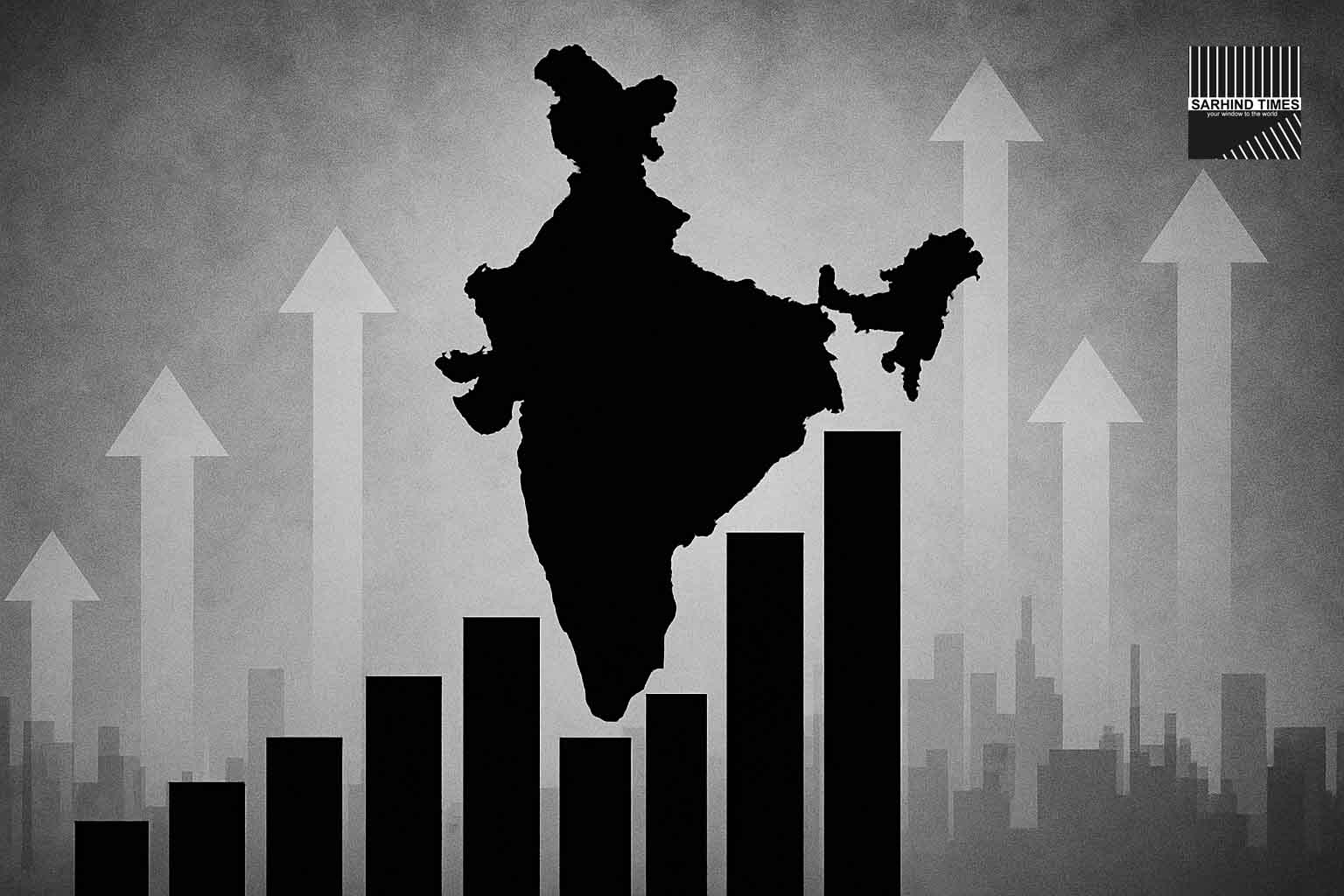New Delhi, October 12, 2025 — In a powerfully optimistic address at the Gujarat Institute of Public Economics (GIPE), former Reserve Bank of India Governor Shaktikanta Das laid out a bold economic narrative: that India is on track to become the third-largest economy in the world by 2028. He attributed this projected ascent to a sustained mix of structural reforms, macroprudential stability, rising productivity, and a rejuvenated manufacturing posture.
Das, now serving as a senior economic voice and policymaker, cautioned that external risks—commodity volatility, global financial turbulence, and the durability of capital investment cycles—remain real challenges. Still, he emphasized that India’s policy buffers today are markedly stronger than a decade ago, providing the resilience required to navigate shocks.
Economists and market commentators have received his claim with a mix of enthusiasm and guarded appraisal. Some multilateral projections align with a similar timeline, while others see the third-place crossover as likely to occur slightly later depending on nominal growth, exchange rates, and global headwinds. Regardless, the increasingly shared expectation is that India will remain among the dominant engines of global growth through the rest of this decade.
The Case for 2028: Drivers, Evidence & Assertions
1. Structural Reforms and Institutional Strengthening
Das underscored the cumulative impact of reforms carried out over the past decade: liberalisation of key sectors, rationalisation of subsidies, strengthening the fiscal framework, banking recapitalisation cycles, and a more disciplined approach to public investment. These have, he argued, buttressed India’s macro fundamentals and made its growth trajectory more stable.
He also pointed to the increasing formalisation of the Indian economy—the expansion of the GST base, digitisation of payments, and broader financial inclusion measures—as enabling a better tax base, more efficient resource allocation, and reduced leakages.
2. Macro Stability & Policy Buffers
According to Das, India today is better equipped to absorb shocks. Fiscal deficits are more tightly controlled, inflation anchoring is stronger, and foreign exchange buffers are higher. These factors, he said, give India flexibility in adverse external conditions.
He cautioned, however, that sustaining such buffers will require continued prudence—keeping public debt under control, managing contingent liabilities (e.g. in banking), and calibrating monetary policy with sensitivity to global cycles.
3. Productivity, Technology & Manufacturing
A key pillar of Das’s projection is that productivity gains—driven by technology adoption, supply chain optimisation, and scale economies—will widen the output base beyond traditional service growth. Manufacturing, which has arguably underdelivered relative to India’s ambitions, is now showing signs of revival, especially under various PLI (Production Linked Incentive) programmes and “Make in India 2.0” push.
He suggested that leveraging India’s large domestic demand, combined with export orientation, will spur further industrial expansion and upstream investments.
4. State and Subnational Engines of Growth
In line with recent studies, Das alluded to the fact that India’s rise will be uneven across states, with certain states emerging as “growth poles” contributing disproportionately. Recent analyses by Morgan Stanley, for example, project that by 2028, India could edge past Germany and Japan to become the third-largest economy—provided states adopt competitive frameworks, move quickly on infrastructure and policy reforms, and deepen federal cooperation.
These studies highlight that states such as Maharashtra, Gujarat, Karnataka, Tamil Nadu, and Uttar Pradesh may individually approach or even cross $1 trillion in gross state domestic product levels by the early 2030s.
Thus, Das’s projection implies that the national trajectory is heavily contingent on subnational performance and coordinated federalism.
5. Global Growth Share & India’s Role
An allied strand of argument is that India is poised to command a rising share of global growth. Some estimates suggest India might contribute up to 20 % of global GDP growth over the coming decade. If that share materialises, India’s relative position among large economies could shift more rapidly.
By capturing such growth share, India would not just climb in nominal ranking but also wield greater influence over global trade, capital flows, and multilateral agendas.
Caveats, Risks & Constraints
While Das conveyed confidence, he did not ignore the headwinds. Below are key risk vectors that analysts say must be managed if the 2028 ambition is to remain credible.
Commodity & External Shock Risks
Given India’s continued import dependence for energy and certain materials, commodity price shocks (oil, metals) remain a vulnerability. A sharp global downturn or financial stress could dampen growth, tighten credit, or worsen fiscal balances.
Investment & Capital Intensity
To deliver transformational growth, India needs sustained capital expenditure (capex) in infrastructure, manufacturing, and technology. Any slackening or crowding out of private investment could derail momentum. The durability of private sector confidence in long-gestation projects is crucial.
Financial Sector Health
India’s banking and non-banking financial sectors still carry non-performing assets (NPAs), legacy provisioning challenges, and pressure from credit growth mismatches. If left unaddressed, latent vulnerabilities may impair credit transmission or necessitate stabilising interventions.
Exchange Rates, Nominal Growth & Inflation
Even with high real growth, nominal GDP and currency valuation trends matter for ranking among global economies. If inflation gets ahead of growth or depreciations erode real value, the climb may be deferred. Similarly, comparing across nations demands adjustments for exchange rate cycles.
Inequality, Inclusion & Job Creation
Growth that favors only a segment of society, or fails to deliver equitable job creation, may generate political backlash, social stress, or undercut human development. India must ensure that rising output translates into inclusive opportunity, especially for youth, women, and less developed states.
Infrastructure & Implementation Risk
Policy pronouncements are one thing; ground execution is another. Delays in land acquisition, regulatory clearances, intergovernmental coordination, infrastructure bottlenecks (power, logistics, water) all pose real implementation drag.
Comparisons & Forecasts: What Do Other Projections Say?
Several financial institutions and multilateral bodies have attempted to forecast India’s position in the global economic order. The conclusions, however, differ depending on assumptions of growth, inflation, exchange rates, and structural transformation.
- A Morgan Stanley report estimates that India could breach into the world’s top three by 2028, and projects a GDP of USD 10.6 trillion by 2035.
- The Economic Times commentary further emphasizes the importance of states and union territories in making that leap credible.
- Some Indian government-aligned projections count on India becoming the third-largest economy by 2030, driven by current growth trends and policy pushes.
- Analysts caution that small deviations in growth or global cycles may shift the crossing point a year or two earlier or later.
In other words, while the “2028” benchmark is ambitious, it falls within plausible bounds if India maintains growth, policy discipline, and structural momentum.
What This Means: Implications & Stakes
Global Economic Standing & Influence
If India succeeds in rising to the top three by 2028, it would alter geopolitical and economic balance. India could demand greater voice in governance institutions, attract capital more on its terms, and shape global norms in trade, climate, technology, and finance.
Investment Appeal & Capital Flows
A credible climb enhances investor confidence. Multinational firms would view India not just as a growth market, but as a leading hub for production, R&D, and global supply chains. Capital flows—FDI, debt, portfolio—could tilt more favorably.
Domestic Reform Mandate
Such a trajectory strengthens imperative for deeper reforms—labour, land, environment, taxation, governance. To match size with quality, India must continuously iterate on institutional strength and reduce friction in doing business.
Infrastructure & Urbanization
Rapid growth will magnify pressure on cities, transport, housing, water, power and mobility. Urban planning, sustainable development, and provision of civic amenities must scale with pace.
Human Capital & Skills
The demographic dividend is not automatic. Translating demographic size into productive force requires sustained investment in education, skilling, health, and lifelong learning. The emphasis must shift from quantity to quality.
State-level Mobilization & Competitive Federalism
States will be the crucibles of growth. Those that adopt pro-investment policies, ease regulation, encourage innovation, and maintain fiscal discipline will attract disproportionate share of economic weight. Competitive federalism will matter more than ever.
Conclusion: A High-Risk, High-Return Path
Shaktikanta Das’s projection is audacious, yet anchored in the plausible — provided several moving parts align. India has rarely been closer, in modern times, to such a juncture. If 2028 becomes the year India concretely soils the rank of the third-largest economy, it will be due to decades of reform, relentless execution, structural bet on manufacturing and productivity, and the capacity to absorb shocks.
Yet the window is narrow. Delays, global turbulence, weak execution, or complacency could widen the gap. For now, Das’s pronouncement sets a bold narrative — one India must now race to meet, lest the lapse of momentum push the goalpost further ahead.
India’s journey toward “Top-3 by 2028” is no mere slogan. It is a public bet on governance, markets, society, and institutions. If India falters, the opportunity will remain in sight—but the badge may slip to 2030 or beyond. The test now is whether momentum and resolve align to turn aspiration into destiny.






















+ There are no comments
Add yours